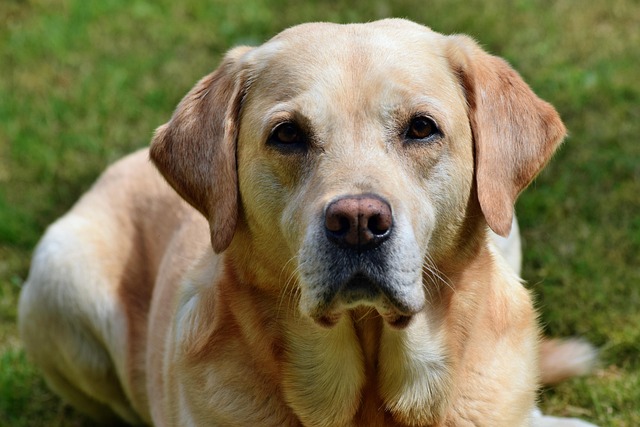
How can I tell if my dog's heatstroke is serious
Let’s be real: It’s a sticky August morning in Los Angeles, and you took your 2-year-old Golden Retriever, Max, for a walk a little later than usual
If you’re a new dog parent in the US—maybe you just brought home a squishy 8-week-old Lab puppy from a shelter in California, or adopted a 2-year-old Beagle mix from a rescue in Texas—and you’re staring at a shelf of dog food bags thinking, How much do I feed her? What even counts as a “good” meal? You’re not alone. Figuring out a dog’s meal plan feels overwhelming at first, but it’s all about matching their age, size, and energy to simple, nutrient-packed foods. Let’s break this down so you can stop stressing and start feeding your pup right.
First, let’s keep the science straightforward: Dogs need three main things to thrive—protein (for muscles and energy), healthy fats (for their coat and brain), and fiber (for a happy gut). Think of it like your own balanced diet, but tailored to their bodies. Puppies (under 1 year) need more calories and protein to grow—they’re like tiny athletes—while adult dogs (1-7 years) need steady portions to avoid weight gain. Senior dogs? A little less fat, but still plenty of protein to keep muscles strong. Avoid foods with “meat by-products” (those are low-quality bits) or artificial colors—they’re like junk food for dogs. Take Maria, a first-time owner in Florida: She fed her 6-month-old Poodle, Lua, a cheap kibble with corn as the first ingredient, and Lua got sick often. Her vet switched them to a chicken-based kibble (real meat first!) with added omega-3s, and Lua’s energy and coat improved in a week.

Here’s a simple, actionable meal plan, step by step: For puppies (8 weeks to 1 year), feed 3-4 small meals a day. Use a measuring cup (no guessing!)—follow the kibble bag’s guide, but adjust if your pup is extra active (like a Husky who needs more) or calm (like a Pug who needs less). Add a tiny spoonful of plain, cooked pumpkin (for fiber) or mashed banana (a sweet treat) once a week—no onions, grapes, or chocolate (those are toxic!). For adult dogs, 2 meals a day (morning and evening) works best. Stick to the same times—routine helps with potty training (and makes your apartment life easier!). For treats (key for positive training!), use freeze-dried chicken or small pieces of cooked turkey—keep them under 10% of daily calories (no more than 2-3 a day). Never use food as punishment—withholding meals or scolding during feeding time breaks trust, and US animal welfare norms strictly ban that. Instead, reward good behavior (like sitting before eating) with a tiny treat—positive reinforcement makes mealtime fun, not stressful.
Now, let’s tie in rules and community habits that matter. Every US state requires core vaccines (distemper, parvovirus)—while food doesn’t replace shots, regular vet visits (mandatory for vaccine updates) let your vet tweak your meal plan. For example, if your dog has allergies, a vet can recommend a hypoallergenic diet. Skipping checkups could get you fined $100–$200 in New York or Illinois. If you live in an apartment (common in NYC or Chicago), store kibble in an airtight container—this keeps pests away and stops strong odors from bothering neighbors. When you walk your dog (even after meals!), always clean up their poop—cities from Seattle to Boston have fines up to $300 for leaving waste, and it keeps shared spaces healthy. And during community dog walks, don’t share treats with other dogs—you don’t know their allergies, and it’s polite to ask first.
A good meal plan isn’t about perfection—it’s about consistency and quality. With the right food, steady portions, and follow-through on local rules, you’ll keep your pup healthy, happy, and ready for all those apartment snuggles and park walks.

Let’s be real: It’s a sticky August morning in Los Angeles, and you took your 2-year-old Golden Retriever, Max, for a walk a little later than usual

You're enjoying a summer afternoon at the park when you notice your dog has stopped panting and appears disoriented - their gums are bright red

Let’s paint the picture: You’re in your Denver apartment, watching your 4-year-old Boston Terrier, Ruby, plop down mid-play session with her favorite toy

Many dog owners notice their pets nails seem shorter after regular walks,but how much does this daily activity actually help?The answer depends on where you walk—concrete sidewalks or asphalt streets gently file nails as a dog's paws hit the ground

Most dog owners notice their pup scooting across the carpet at some point, but few connect it to impacted anal glands. These small sacs near a dog’s rectum secrete a scent for marking territory

Most vets agree that regular dog teeth cleaning is key to avoiding painful dental issues later. For healthy adult dogs, a professional cleaning at the vet’s office every 12 to 18 months usually works well.